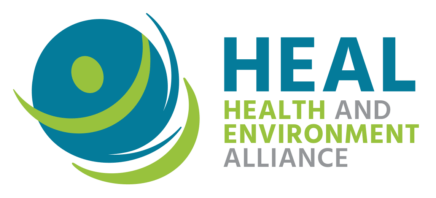Press release: HEAL, together with the EDC-Free Europe coalition, is calling on future EU leaders to protect health and the environment from health-harming endocrine-disrupting chemicals. The coalition shared its priorities for the upcoming policy mandate at an event at the European Parliament.
The European Chemicals Agency (ECHA) has recognised HPFO-DA – a fluorinated substance using the so-called GenX technology – as a substance of very high concern (SVHC) due to its probable serious effects on human health and the environment [1]. The environmental health community applauds this decision, which adds urgency to scientific alarms about the long-term impacts of fluorinated substances and highlights the need to step up European efforts to minimise their use and release.
The decision to identify 2,3,3,3-tetrafluoro-2 (heptafluoropropoxy) propionic acid, its salts and its acyl halides (denoted as HFPO-DA) as SVHC was taken unanimously in the ECHA Member States Committee, which met this week in Helsinki [2]. The Netherlands had proposed for HPFO-DA to be placed on the SVHC list, according to article 57(f) of REACH [3].
In recent years, HPFO-DA has increasingly been used as a replacement for PFOA in the production of high-performance fluoropolymers such as non-stick coatings or resins. According to the supporting dossier, exposure to HPFO-DA can be linked to toxicity for the liver, the kidney, the blood, and the immune system, and suspicions of carcinogenicity and endocrine disrupting effects for humans also exist.
Adding to the intrinsic properties of the substance, severe concerns exist about the potential irreversibility of its effects. HPFO-DA’s high persistence and high mobility in water are expected to result in ever increasing exposure over time, including in the absence of natural possibility to remove it from the environment once emitted – hence its nickname of ‘forever chemical’.
“A careful analysis of the properties of this compound combined with its persistence and mobility leaves no doubt that it belongs to the category of substances of very high concern, that not only threaten today’s health and environment, but also that of future generations,” says Natacha Cingotti, HEAL’s senior policy officer for health and chemicals. “Scientists have long warned about the human health and environment challenges of the entire PFAS family, and European environment ministers just called for an action plan to eliminate all the non-essential uses of PFAS. It is high time for the Commission and ECHA to up their game in order to develop a group approach for PFAS, to swiftly reduce exposure and avoid regrettable substitution”.
Background
So-called GenX compounds such as HPFO-DA are part of the family of fluorinated compounds. Due to the global ban on PFOA, they have increasingly been used as a replacement in recent years for a number of applications such as water-repellent or non-stick coatings. Human exposure can happen through water ingestion, air inhalation, or consumer products. They are already regularly found in European waters, including surface waters, ground waters and drinking water.
Due to high persistence and mobility in the aquatic environment, the increasing use of these compounds is expected to lead to long-term and worldwide contamination far from original contamination sites and to remain in the environment even after their use has stopped. PFAS as a group of substances are currently investigated by the European human biomonitoring initiative HBM4EU.
In 2015, through the publication of the Madrid Statement, a group of scientists called on international cooperation in order to limit PFAS production and use and develop safer alternatives [4].
According to a recent report commissioned by the Nordic Council of Ministers, the annual health costs related to exposure to PFAS are estimated to be between 52-84 billion euros for European countries [5].
Just a few weeks ago, a transatlantic group of scientists suggested a characterisation based on the concept of “essential use” in order to organise the phase out of this very large group of substances in the most efficient and health-protective way [6].
Yesterday, European environmental ministers called on the European Commission to develop an action plan in order to phase out all the non-essential uses of PFAS in their Council conclusions on chemicals [7].

